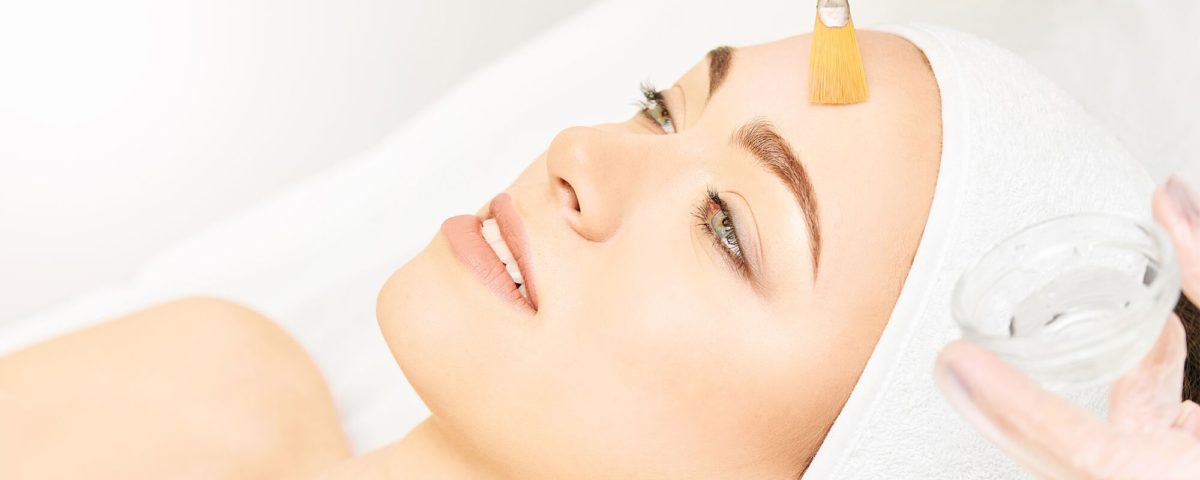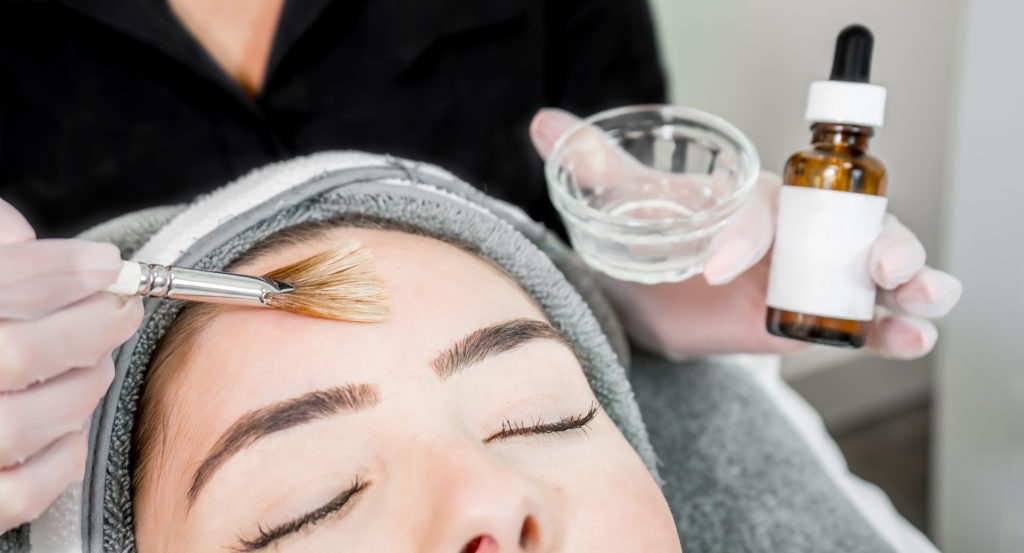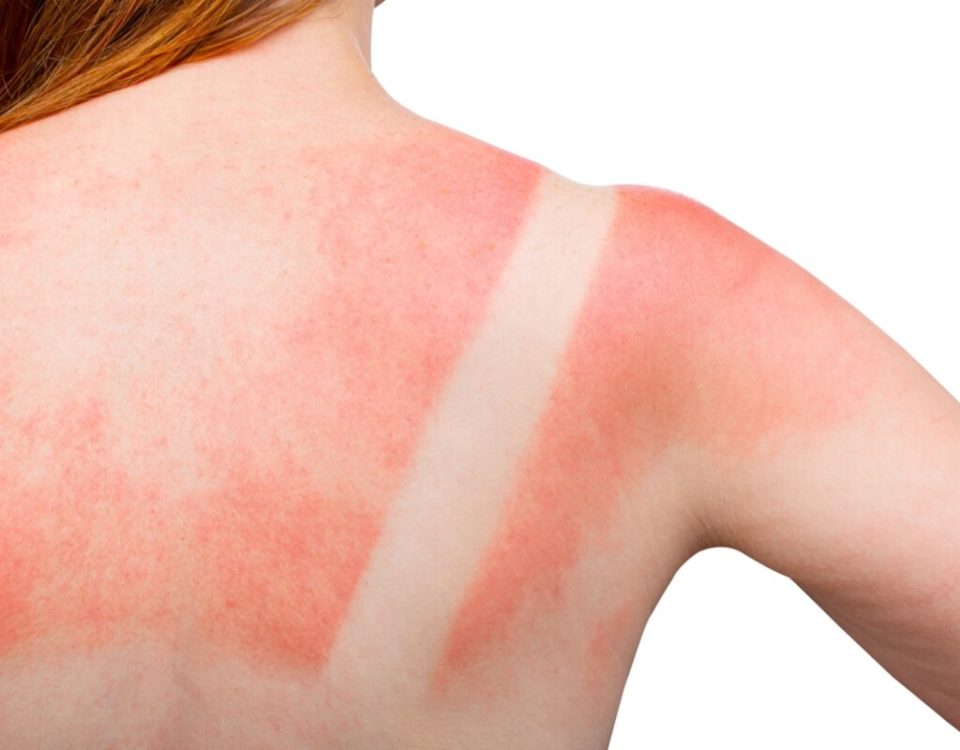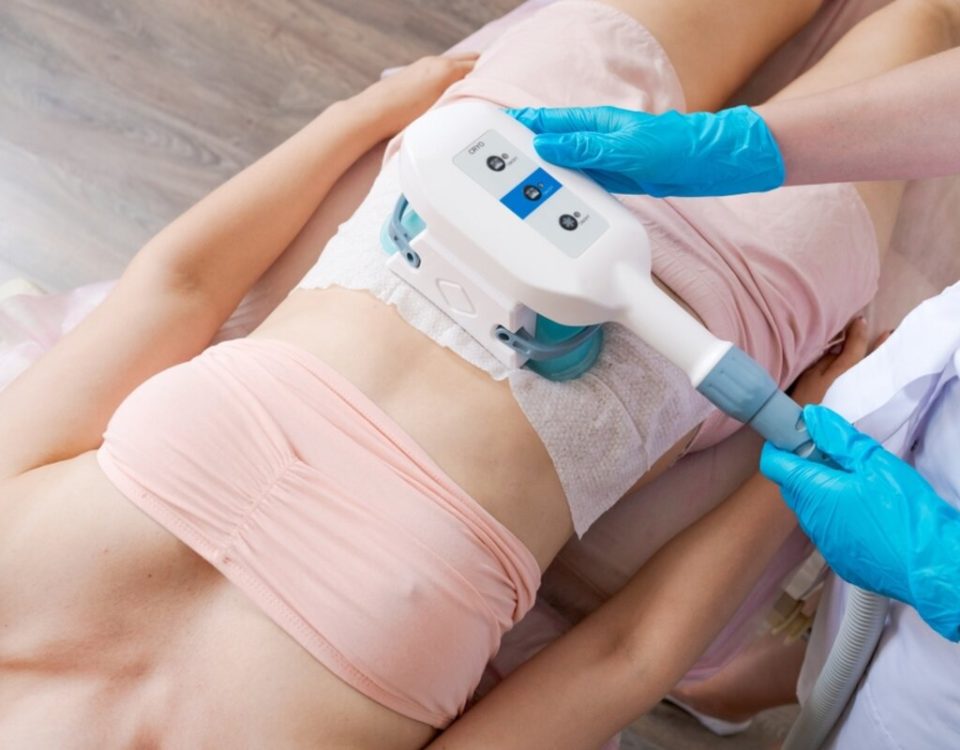
The Benefits of Botox
April 3, 2020
Popular Lip Injection Myths Resolved
May 12, 2020While there are many different chemical peels available in the skincare market today, it can be confusing to identify which one is best for your skin type and the skin issues you may be experiencing. The chemical solutions vary by peel, and each has different effects. While the benefits are very similar, individuals have noticed differing results depending on the reaction of their skin. Your skincare professional can walk you through the process and help you choose the best chemical peel for your skin type.
What is a Chemical Peel?
There are different levels of chemical peels available at the professional level. When receiving a chemical peel, a solution is applied to your skin to help remove old, dead skin cells from the outer layers of the skin. The skin underneath usually has a younger, brighter, smooth appearance. This is an outpatient procedure that can range in time length, depending on the level of peel you select. Your skincare professional will thoroughly cleanse your skin and apply the chemical solution. Many individuals have reported a burning sensation followed by stinging that lasts anywhere from five to ten minutes. Many times, a cold compress will be applied, but pain medication may be required. Many benefits come from chemical peels that keep clients coming back time after time.
Glycolic Peel
Glycolic acid is a colorless, odorless alpha-hydroxy-acid (AHA) that is derived from sugarcane. This chemical solution exfoliates your skin while dissolving dead skin cells allowing them to be removed easily. The removal of dead skin cells will result in a healthier, younger-looking appearance. Three major types of glycolic acid peels differ based on the concentration levels of the acid that’s applied to your skin, how long the solution remains on your skin, and the overall effects individuals have reported.
- Light: Involves the use of 20 to 30% glycolic acid that is applied for a minute or two. A light or “superficial” peel will only affect the surface layer of your skin, which is helpful for those that suffer from mild hyperpigmentation. There is little to no downtime required for this level of peel, but individuals should refrain from using any skincare or makeup products for up to 24 hours.
- Medium: Involves the use of 35 to 50% glycolic acid that is applied for two to five minutes. A medium-depth peel reaches the papillary dermis, which sits below the epidermis. Individuals that suffer from melasma and hyperpigmentation will benefit from this peel and may notice improvements in the overall texture of the skin. A week of downtime should be expected, and most will experience redness and sensitivity. Individuals should refrain from using any skincare or makeup products during this time.
- Deep: Involves the use of 55 to 70% glycolic acid that is applied for three to fifteen minutes. A deep peel reaches the reticular dermis, which sits below the papillary dermis. Individuals that receive this peel will notice the same effects as a medium-depth peel along with improvements in the appearance of acne scarring. Up to two weeks of downtime should be expected as this level is the most invasive and can come with severe side effects if not correctly cared for.
Glycolic acid is also known to have antibacterial properties, so if you have acne-prone skin, this peel will likely calm the effects. If you have sensitive skin or an existing skin condition such as psoriasis, rosacea, or eczema, it’s encouraged to discuss options with your skincare professional. Glycolic acid can be more irritating than other chemical solutions meaning your skin may not react well.
What to Expect
At the start of your procedure, your skincare professional will thoroughly cleanse and sanitize your skin. The glycolic acid solution will be applied and left for the appropriate duration of time, depending on the level of peel you have chosen. Individuals may experience tingling or stinging during the procedure. After the exposure window has passed, the solution is neutralized with water or another solution and removed. After your treatment, a cold compress will be applied to the affected area to soothe the skin and promote healing. If you have chosen to get a deep glycolic acid peel, skincare professionals are likely to use local or regional anesthesia to numb your face and make the process more comfortable.
Aftercare and Side Effects
During the healing process, it’s essential to be very gentle with your skin and refrain from skincare and makeup products. If you must use skincare products, verify that they’re gentle, hydrating, and not exfoliating. It’s vital to limit sun exposure and use proper sun protection when applicable. If you receive a deeper peel, petroleum jelly or another ointment may be recommended to help protect the skin. Additionally, individuals can use a fan or ice pack to soothe the skin as well as ibuprofen.
Individuals will likely experience redness, irritation, scarring, and discoloration during the healing time. For light or medium-depth peels, there may be dryness or shedding of the skin for two to three days after the procedure. For deep peels, individuals can experience scarring and infections if not properly cared for.
Salicylic Peel
Salicylic acid is a beta-hydroxy acid that is derived from the bark of willow trees. This chemical solution is a superficial peeling agent that works similarly to glycolic acid by breaking down dead skin cells. The dead skin cells are removed in a shedding or peeling reaction resulting in a brighter, smoother complexion. These facial peels can be purchased over-the-counter (OTC) if the acid concentration is below 20%, and with a skincare professional if the levels are higher than 20%. A salicylic acid peel can be utilized on various parts of the body since it’s suitable for many different skin types. Individuals have reported improvements in the following skincare issues:
- Skin Complexion
- Acne and Blackheads
- Sun Damaged Skin
- Fine Lines and Wrinkles
- Hyperpigmentation
- Oily Skin
What to Expect
The levels of salicylic acid peels can vary similarly to glycolic acid peels. Therefore, at the start of your appointment, your skincare professional will access your skin and determine which level of peel will be most beneficial. Your skin will be thoroughly cleaned and sanitized to prepare for the procedure. The chemical solution will be applied to your skin and will remain in place for the designated amount of time, and you may experience itching and tingling. The peel will be neutralized with water or another solution and removed. After your treatment, a cold compress will be applied to the affected area to soothe the skin and promote healing.
Aftercare and Side Effects
A salicylic acid peel will likely cause sun sensitivity, so sun protection should be applied regularly. Those that receive this treatment can also limit sun exposure for the entirety of the recovery process to avoid any complications. Individuals may experience redness and mild flaking or shedding. This will typically last anywhere from one to three days. Like a glycolic acid peel, if you’re uncomfortable, petroleum jelly or another ointment can be applied to provide comfort as well as a fan or cold compress. Individuals can also take ibuprofen to ease the pain if any is present.
TCA Peel
Trichloroacetic acid (TCA) is a modified synthetic chemical that is composed of many different acid compounds and a relative of vinegar. This chemical solution exfoliates your skin by dissolving dead skin cells to reveal newer and smoother skin layers below. There are many different levels of TCA peels ranging in concentrations of 15 to 50%, each providing individuals with different benefits. This chemical solution can be utilized on various areas of the body, and individuals have reported improvements in the following skincare issues:
- Hyperpigmentation
- Sun Damaged Skin
- Melasma
- Acne
- Fine Lines and Wrinkles
- Skin Complexion
What to Expect
The levels of TCA peels can vary similarly to glycolic and salicylic acid peels. Therefore, at the start of your appointment, your skincare professional will access your skin and determine which level of peel will be most beneficial. Your skin will be thoroughly cleaned and sanitized to prepare for the procedure. The chemical solution will be applied to your skin and will remain in place for the designated amount of time, and you may experience tingling and prickling. The peel will be neutralized with water or another solution and removed. After your treatment, a cold compress will be applied to the affected area to soothe the skin and promote healing.
Aftercare and Side Effects
Like a glycolic or salicylic acid peel, you will likely experience sun sensitivity with a TCA peel. Sun protection should be applied regularly, and sun exposure should be kept to a minimum. A TCA peel will likely cause sun sensitivity, so sun protection should be routinely applied. Individuals may experience redness and mild flaking or shedding. This will typically last anywhere from one to three days. If you’re uncomfortable, petroleum jelly or another ointment can be applied to provide comfort as well as a fan or cold compress. Individuals can also take ibuprofen to ease the pain if any is present.

Book Your Consult
Many individuals benefit from chemical peels, but each type is very similar in the overall process, results, and aftercare. Your skincare professional will help you determine which chemical peel is best for your skin and the issues you’re experiencing. While it can be intimidating to schedule an appointment and move forward with a chemical peel, take the step and get that youthful, healthy glow you’ve been dreaming of.
New Clients:
$35 deposit for all new clients
Cancellation/No Show Policy:
$35 fee for all no show, no call and any cancellations less than 24hrs before the start of your appointment.Any prepaid services will be forfeited.
Call us at +1(651)222-4490
Email us at SpaConsultantsMD@gmail.com
or, Schedule a free consultation
We are located on the main level inside of the Blair Arcade Building. We validate parking in the lot connected to the building off of Selby. Be sure to bring your ticket in with you!
Business Hours:
Monday: 9:00am - 8:00pm
Tuesday: 9:00am - 5:00pm
Wednesday: 9:00am - 8:00pm
Thursday: 9:00am - 8:00pm
Friday: 10:00am - 5:00pm
Saturday: 9:00am - 2:00pm (3 Saturdays per month- please call or email for more information)





